Why is the supply of gold in London drying up while stocks in New York are at record levels?
Introduction
In recent months, the global Gold market has experienced an unusual and dramatic shift. London, historically the world’s dominant hub for bullion trading, is facing an acute shortage of physical gold, while stockpiles in New York have surged to record levels.
This unprecedented movement has led to significant withdrawal delays at the Bank of England’s vaults, with wait times increasing from a few days originally, to as long as eight weeks. Meanwhile, COMEX stockpiles in New York have expanded at a pace last seen in the aftermath of the COVID-19 crisis, when an unprecedented $30 trillion in fiscal and monetary stimulus flooded financial markets.
The growing imbalance between these two financial centers has intensified market volatility. Traders have been capitalizing on widening price discrepancies between London’s spot market and New York’s futures contracts, triggering vast transatlantic gold transfers.
Analysts point to two primary factors driving this disruption: concerns over potential US tariffs on bullion and a transatlantic arbitrage opportunity arising from higher futures prices in New York compared to London’s spot market.
However, these explanations alone do not fully capture the complexity of the shift. Other underlying forces, such as heightened geopolitical uncertainty, inflationary pressures, and an acceleration in central bank gold accumulation by nations like China and Russia, maybe playing an equally significant role in reshaping the landscape of global gold trade
1. The Tariff Hypothesis: A Misguided Explanation
While some analysts and industry experts argue that concerns over potential US tariffs on bullion have prompted traders and investors to shift gold to New York, a closer examination reveals that this explanation is insufficient for several reasons.
Unlike industrial commodities such as steel or aluminum, where trade barriers and protectionist policies can incentivize domestic production, gold operates under fundamentally different dynamics.
Indeed, it is not a key input in manufacturing but rather a store of value, a financial asset, and more importantly a finite resource that cannot be artificially increased or substituted, as no level of sanctions or tariffs can directly impact gold production of a given mine.
Moreover, the US being only the fifth producer of gold worldwide, it lacks the production power to impose effective tariffs on gold.
One hypothesis supported by investment specialists suggests that the real concern lies in the ambiguity of the administration’s directives, which have often been broad and blurry.
This uncertainty has fuelled fears that tariffs could inadvertently be applied to gold or at least create the perception of such a risk, triggering market anxiety. This effect is magnified by the popularity and importance of gold as an investment and store of value, with investors trading more than $160 billion worth of gold-backed instruments a day, according to the World Gold Council, which is roughly equal to trading volume for T-Bills.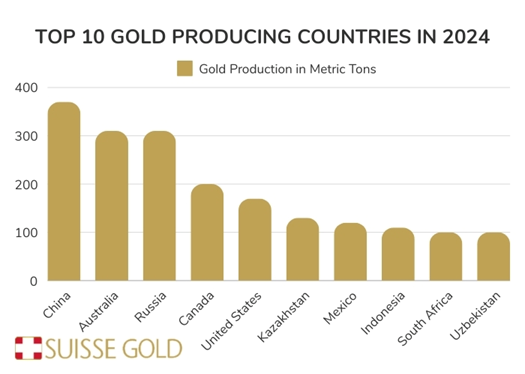
Financial analysts also point out that the broader objectives of Trump’s trade policy, which is about boosting domestic production, expanding job creation, and addressing trade imbalances, do not align with imposing tariffs on gold.
The administration’s stance, encapsulated in the "Make America Great Again" agenda and Trump’s recent will to make America a “manufacturing powerhouse”, is focused on protecting and revitalizing US industries, which gold, as a non-manufactured asset, does not directly influence.
Ultimately, the evidence suggests that the movement of gold from London to New York is not driven explicitly by fears of tariffs. Instead, it reflects deeper financial incentives, such as arbitrage opportunities between London spot prices and US futures contracts, along with broader market realignments driven by foreign central bank purchases and global economic uncertainty.
2. Foreign Gold Accumulation
Another more plausible explanation for the shortage of bullion in London can be found looking at central banks, especially those from emerging countries, who have been increasing their purchase of gold.
China is the central figure in this phenomenon, leading a global gold accumulation strategy. Many analysts believe its actual purchases far exceed official reports—potentially by a factor of ten—fuelling speculation about its long-term monetary objectives and the impact on gold availability.
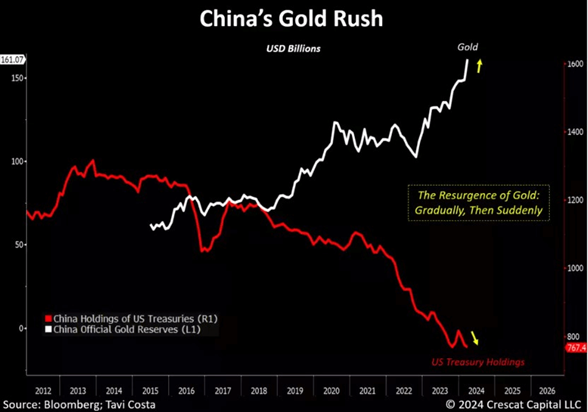
Indeed, in 2023 alone, central banks led by China purchased 1,037 metric tons of gold, with the Popular Bank of China (PBoC) buying more gold than all other central banks combined, according to the World Gold Council (WGC).
This aggressive accumulation, coupled with the dumping of US treasuries in its reserve, has gained significance in the wake of increasing economic sanctions, highlighting the geopolitical risks of dollar dependency. By amassing gold, China aims to strengthen its monetary reserves while reducing reliance on Western-dominated financial systems.
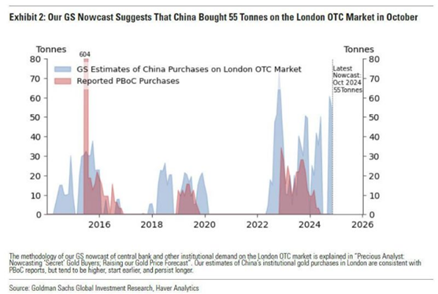
This trend reflects a broader movement among emerging economies seeking to insulate themselves from Western financial dominance. Beyond China and Russia, countries such as Turkey, India, and several Gulf states have also accelerated their gold purchases, driven by concerns over inflation, currency devaluation, and geopolitical instability.
These acquisitions have further tightened liquidity in London, diminishing the availability of gold reserves traditionally used by financial institutions and traders in the city’s robust OTC market.
Unlike in previous periods, when gold could be easily recirculated, much of the bullion leaving London today for the East is being secured by these nations and transferred to storage facilities outside the Western financial network, restricting its availability for trading and exacerbating supply constraints.
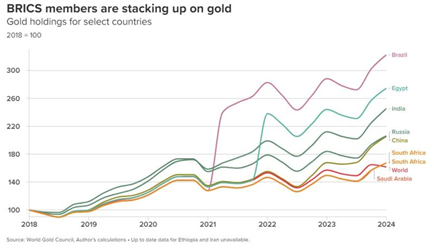
This depletion has made it increasingly difficult for traders and financial institutions to access available bullion, disrupting liquidity and reshaping traditional gold market dynamics. Many experts believe that this trend is not merely a reaction to short-term economic instability but rather a strategic realignment of global financial power.
Central banks and financial institutions are deliberately shifting their gold holdings away from traditional Western markets and toward politically and economically insulated reserves, reinforcing a long-term trend of de-dollarisation among a part of the countries.
3. Arbitrage Opportunity
This doesn’t mean that physical gold isn't being stored in the US. The Financial Times recently reported that since the US presidential election in late 2024, approximately 393 metric tonnes of gold have been transferred into COMEX vaults, marking almost a 75% increase in inventory levels, with the biggest 3 COMEX banks (HSBC, JPM, and Bricks) leading the way.
However, this phenomenon may be even more significant, as analysts suggest that total stockpiles could be higher when factoring in additional shipments to private vaults owned by major financial institutions.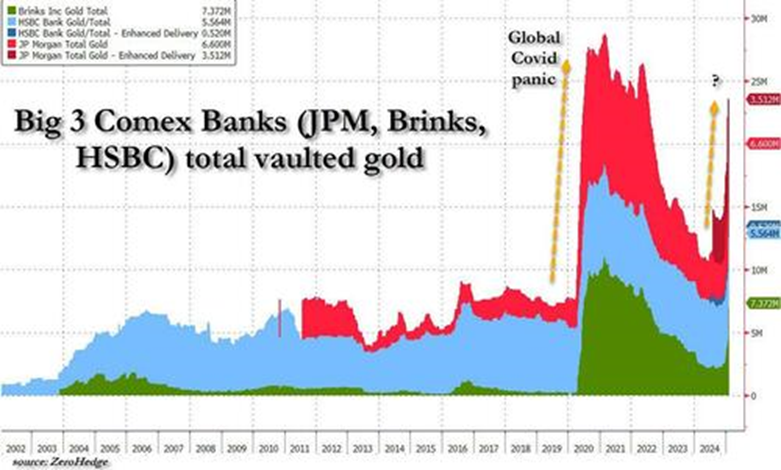
One the most significant drivers of the gold flow from London to New York has been the growing arbitrage opportunity between the two markets.
Reports from the London Bullion Market Association (LBMA) indicate that since the end of 2024, US futures contracts on COMEX have been trading at a premium to London spot gold, a pattern that has repeated historically during periods of supply disruptions and heightened investor demand.
Market participants attribute the premium on COMEX futures partly to logistical constraints and uncertainty. With gold shipments to the US accelerating, some traders tried secured physical holdings preemptively.
Several industry experts, noted that while the market has been closely watching trade policies, there is still significant uncertainty regarding further tariffs on China and the European Union as well as other regulatory measures, leading to heightened demand for gold futures as a hedge against potential market volatility.
Despite the surge in gold stockpiles within COMEX vaults, the long-term implications of this shift remain uncertain. The LBMA has acknowledged the persistent premium on US futures and stated that it is working with CME Group and US authorities to monitor and address the market imbalance. Indeed, the price premium has fluctuated, at times exceeding $60 per ounce before narrowing to approximately $10 per ounce.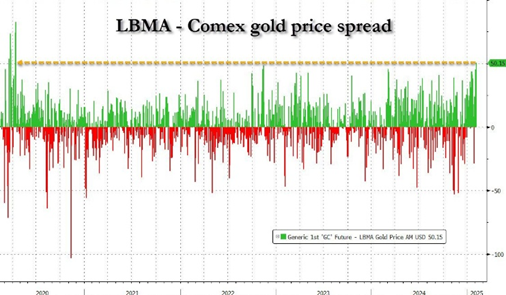
Conclusion
The current shortage of bullion in London and the corresponding buildup of gold in New York mark a significant transformation in global gold markets. While initial concerns over US tariffs have proven largely unfounded, deeper financial forces are at play, including central bank gold accumulation, arbitrage-driven transfers, and logistical constraints in refining.
More than just a temporary liquidity issue, these shifts reflect a reorganization of financial power, where emerging economies are asserting greater control over gold reserves, while Western markets face increasing challenges in maintaining dominance.
The consequences of this evolving landscape remain uncertain, but one thing is clear: as geopolitical instability and inflation concerns persist, gold will continue to serve as a crucial instrument for financial security, reshaping the global economic order in the process.
